How to protect plants from snow: essential cold weather care
Find out how to protect plants from snow this winter to keep them alive when temperatures plummet
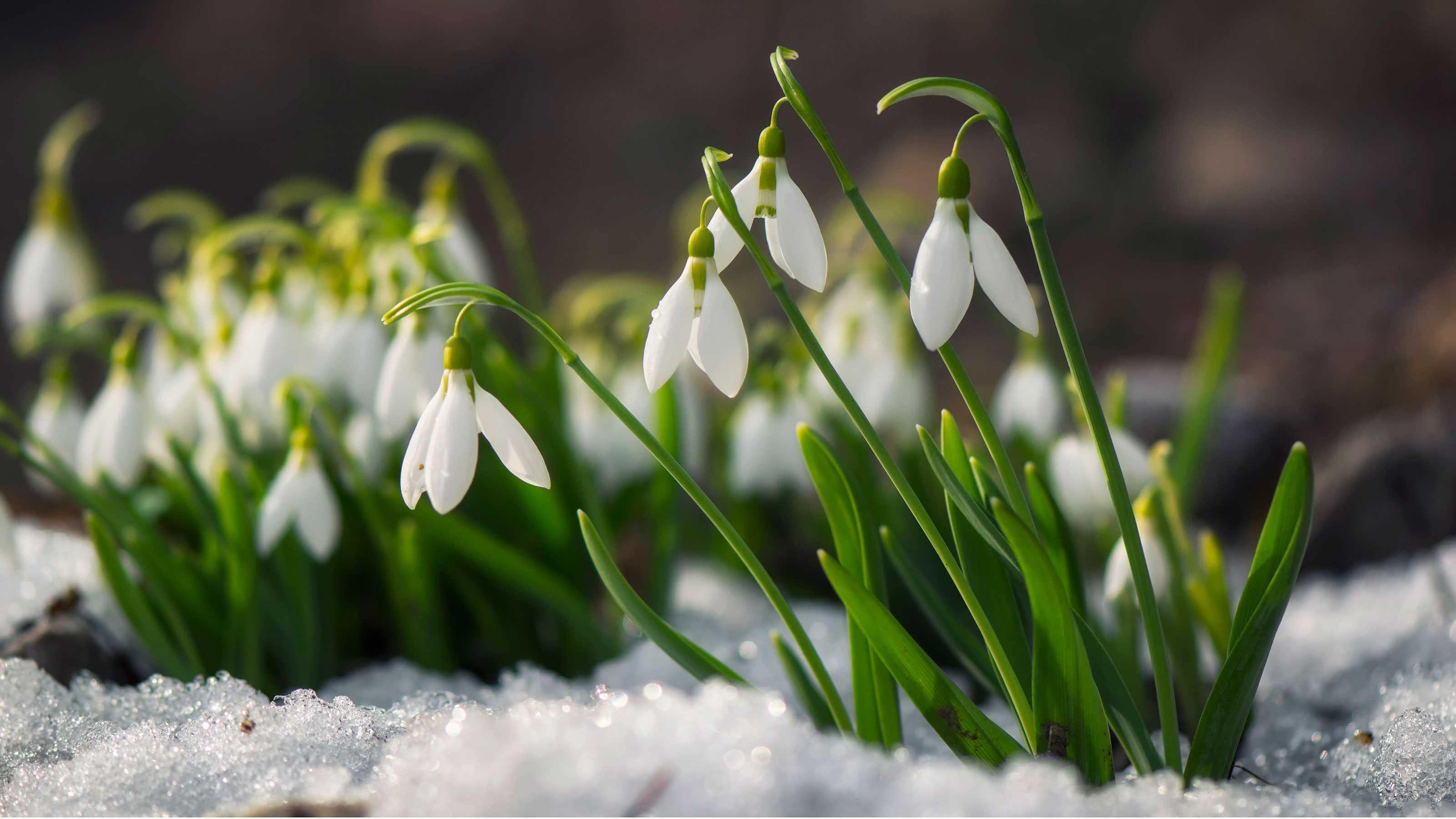

Knowing how to protect plants from snow is essential if you want to keep them alive during the cold winter months. A light dusting of snow is not likely to harm your plants, but heavier or prolonged snowfall can cause problems, snapping leaves from stems and even damaging plants irretrievably, which at worst can mean fast tracking them to the compost heap.
Plants at risk can include newly planted winter veg crops, seeds, tender perennials, ornamental trees and plants in containers. Those stars of the summer garden like dahlias and cannas, fuchsias and pelargoniums, banana palms and tree ferns all come from warmer climates and will shrivel under a blanket of snow if the bad weather is prolonged.
If you don’t want to end up with a mass of dead stems once the snow melts, which will stop all your winter garden ideas in their tracks, don’t leave things to chance. Instead, if snow is forecast plan ahead by finding out how to protect your plants properly.
Covering your plants properly means it doesn’t matter if the snowfall is heavy as they will be snug under a layer of insulating protection.
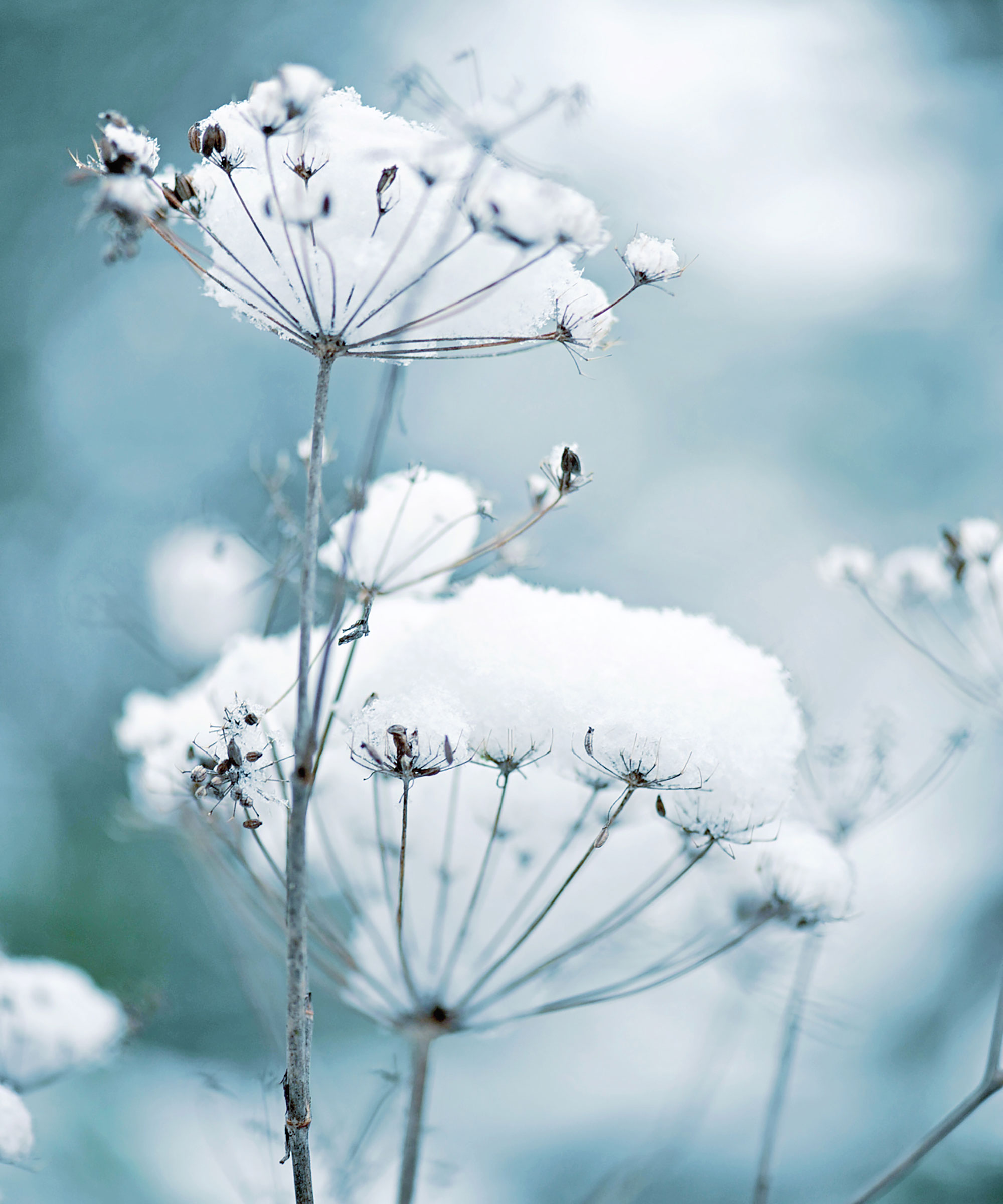
Discover how to protect plants from snow
The first thing to remember when protecting plants from snow is don't panic. Existing plants, shrubs and trees that have been established in the garden for a while should all be fine if you wake up to a whiteout in your garden.
If you've got creative with your winter planters using the likes of pansies and violas, they are very tolerant of cold temperatures, so there's no need to do anything extra with these either.
Anything that's newly planted, however, will need some TLC to protect it from the snow, as will tender perennials and plants that come from hot climates. So if the weather forecast is looking dicey you will need to take protective measures.
The trick with how to prepare a garden for winter is to create insulating bubbles with frost cloth for any plants that are at risk. It's quick and easy to do and will give you peace of mind. After all, you don't want to see that lovely banana palm you've cherished all summer long shrivel and die.
Follow these easy steps for how to protect plants from snow and you'll keep them sheltered from the worst of the weather.
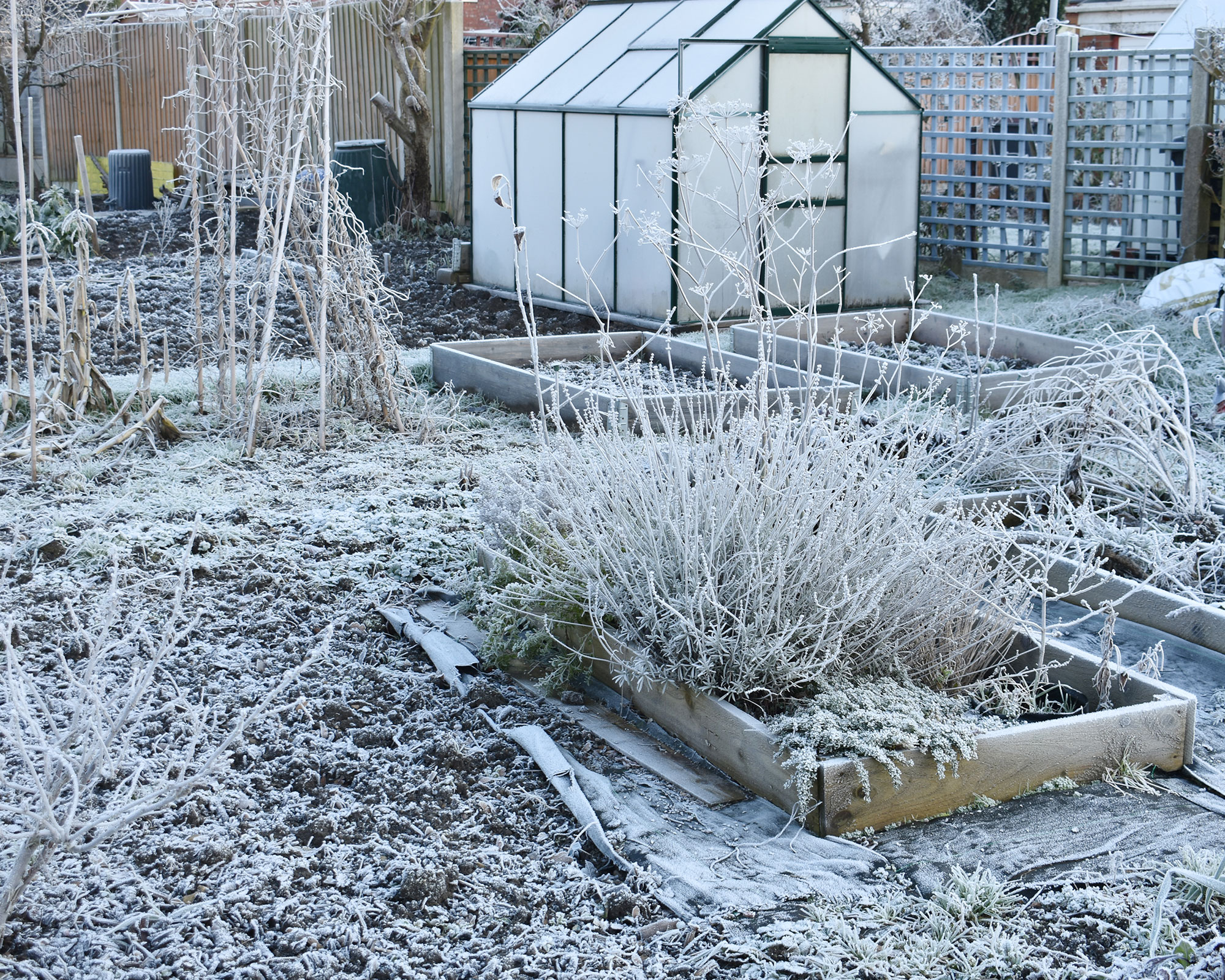
Stock up on protective garden fleece
You'll find that protective fleece is your new best friend in the garden during winter cold snaps. Widely available online and in garden centers, horticultural fleece is a lightweight, soft, polyester material that can be tucked around plants to protect them from snowfall. This has the effect of creating snug little pockets.
Just as with how to protect plants from frost, it's a bad idea to use plastics like polythene or plastic sheeting directly on the plants as this will stifle them. It will trap moisture inside and increases the possibility of frost damage.
Frost cloth (also known as horticultural fleece) is readily available from Amazon. It's is porous, allowing air and water through, which is much healthier for your precious plants. Invest in a decent quality product so that it lasts for years which means it's a more sustainable option as fleece can't be recycled.
You can also buy fleece tunnels for covering rows of tender new vegetables or seeds.
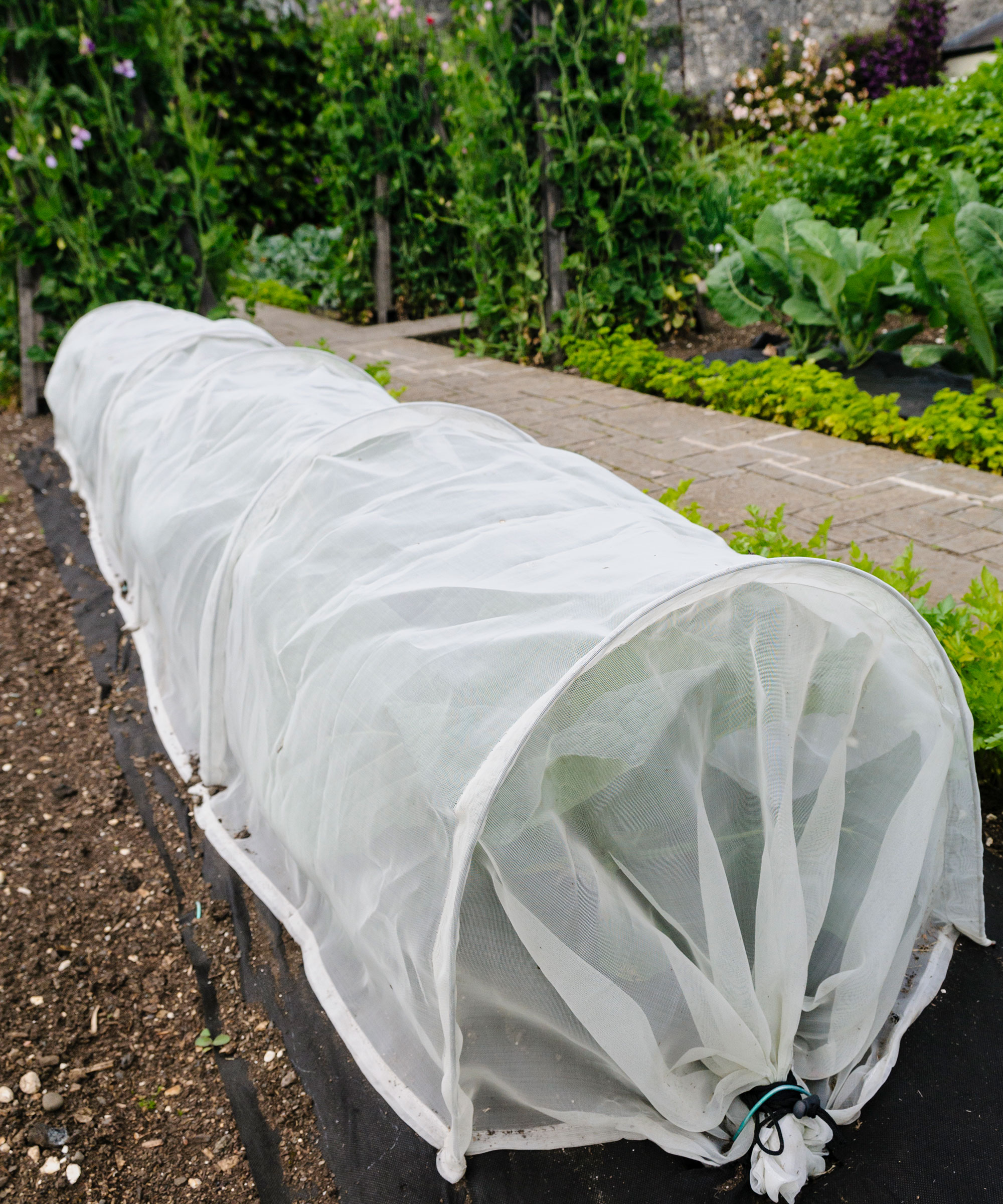
Make a protective fleece wigwam for tender plants
If snow is forecast don't leave things to chance. One of your winter gardening jobs should be to make a protective bubble for any plants you're concerned about by erecting a fleece wigwam over them. This will add a warm layer to keep them safe. Here's how to do it.
- Simply push a stake or cane close to the centre of the plant or container and drape over some horticultural fleece.
- Then add a layer of polythene over the top to keep the fleece dry and insulated so it doesn't lose any heat or get soggy when the snow thaws.
- Tuck in the ends and secure all around in case high winds are on the way too.
You can also buy ready made outdoor plant covers for frost protection, available from Amazon, all of which are easy to use and have a drawstring round the bottom.
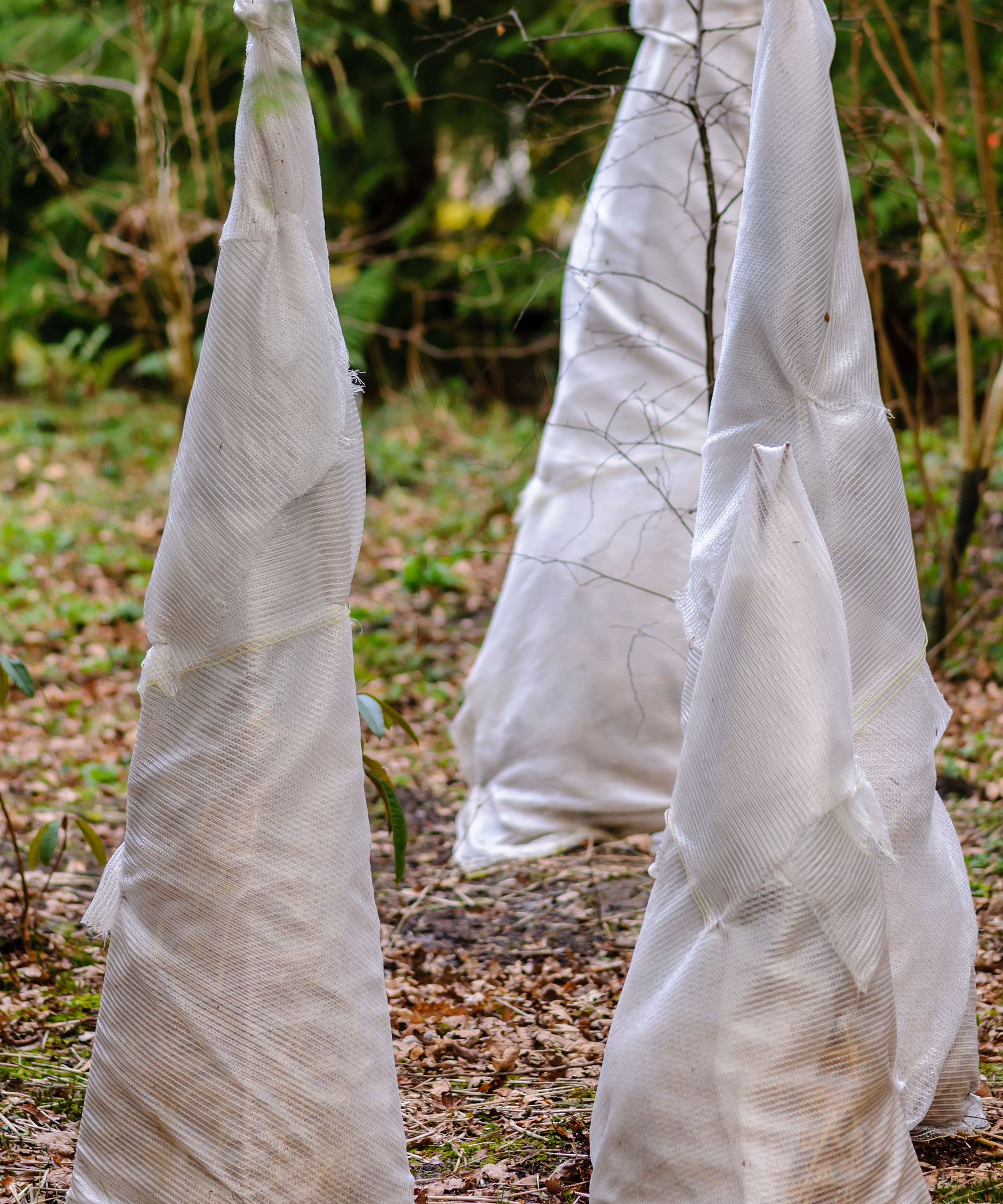
How to protect large plants from snow
Larger plants like banana palms and tree ferns must be wrapped wherever they are as they will be too heavy to move. Slip over a fleece jacket or pack a good thick layer of straw around them.
But if the worst happens and you find your plants, shrubs, hedges and trees covered in a thick layer of snow, use a broom to reach up and gently knock the snow off before it freezes. This will also stop branches bending and possibly snapping off under the weight of the snow.
Be sure to knock snow off hedges and specimen trees too. If it hangs around it can cause damage to branches.
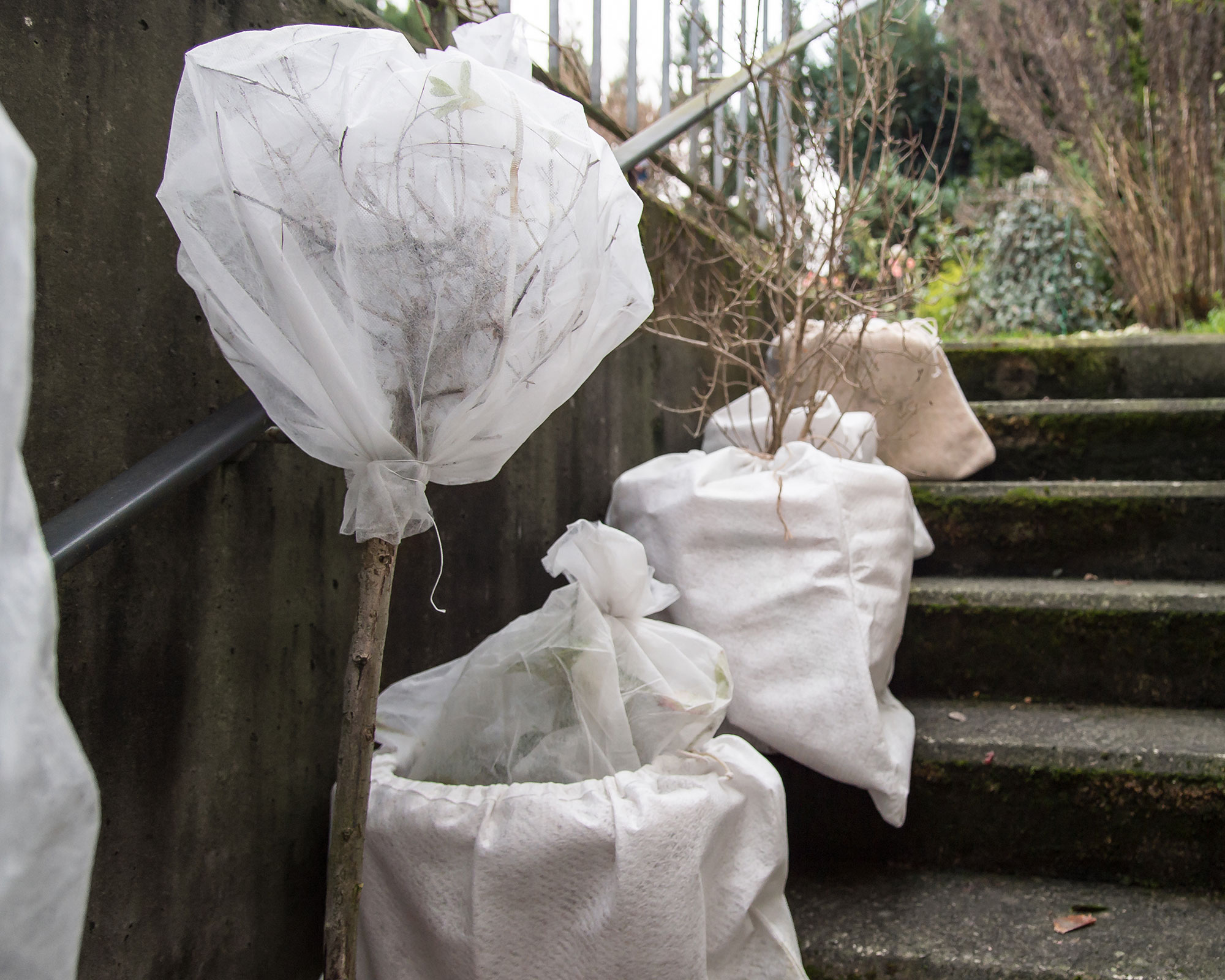
How to protect tender perennials from snow
Growing dahlias, gladiola, cannas and other tender perennials and want to ensure they don't get damaged? The general advice is to lift the tubers and bulbs in fall and overwinter them in a frost free place like a shed or greenhouse. But what if you forgot to do this?
If you have a sheltered garden and the winter is a mild one you may get lucky. But if bad weather is predicted and your plants are still in the ground you can try insulating them in situ by mulching them with several inches of dry mulch such as garden compost, leaf mould or potting compost to help insulate them. You need to keep this dry though so cover with a cloche in the event of snow.
Pelargoniums need very sheltered conditions anyway as well as fleece protection, but if it snows bring them indoors to get them through the worst of the weather. A cool room is best.
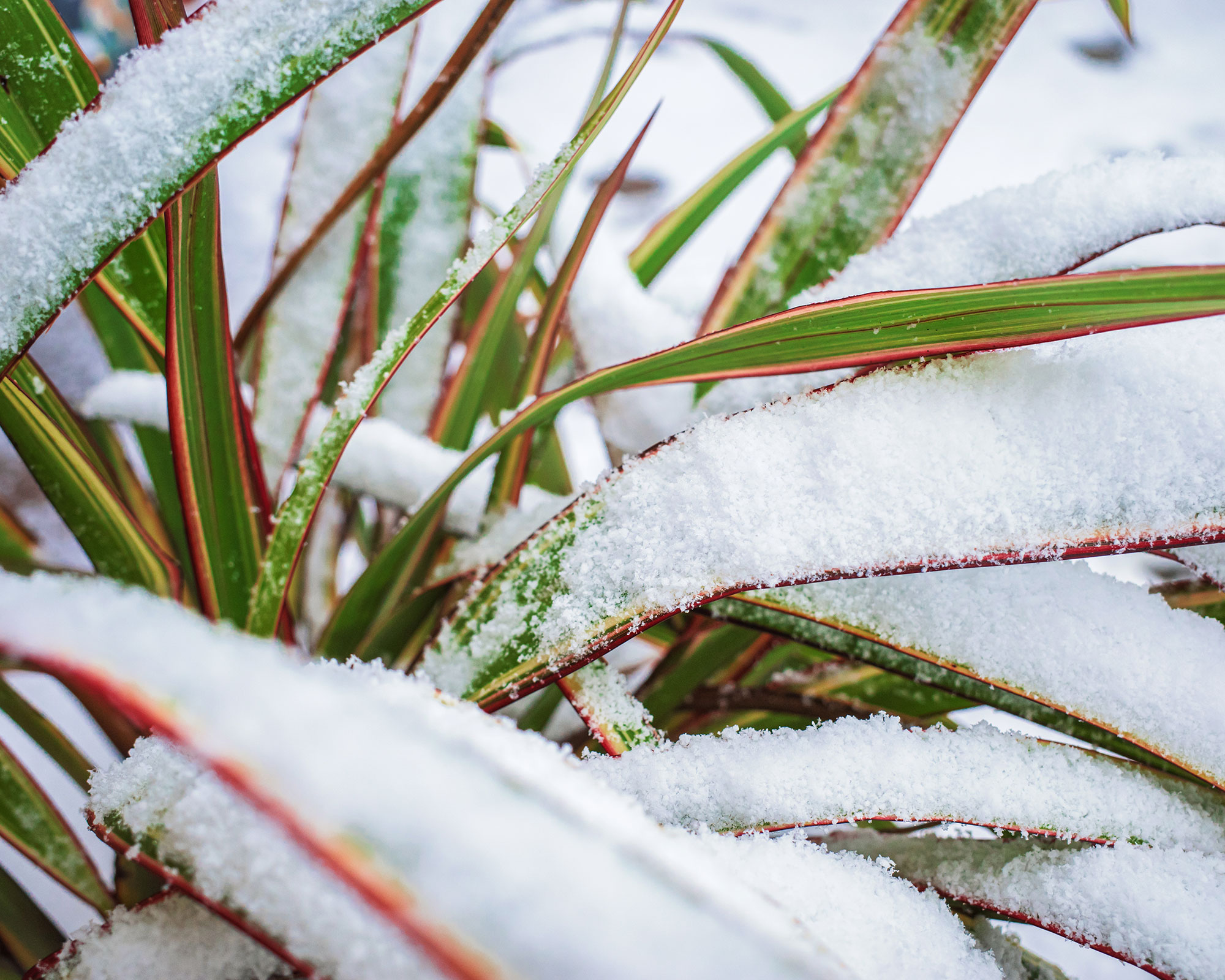
Protect your vegetable patch from snow
In all likelihood, even the best winter vegetables to grow will need some protection from snow if you want to make sure they survive particularly harsh weather and heavy snowfall.
- Give carrots, parsnips and other root crops in your kitchen garden a helping hand with a blanket of straw to stop the ground freezing around them. This will enable you to continue to harvest your crop after the thaw.
- If you're growing lettuce in winter, place cloches over hardy varieties of salad leaves like mustard greens, mizuna, lambs lettuce and ‘Winter Gem’ lettuce until the snow has gone.
- Chard is hardy and withstands frost but it's a good idea to give it the protection of a cloche if it's snowing. Cabbage can be left to do their own thing.
- Keep horticultural fleece or a cloche handy to protect hardy broad bean seedlings in case of snow.
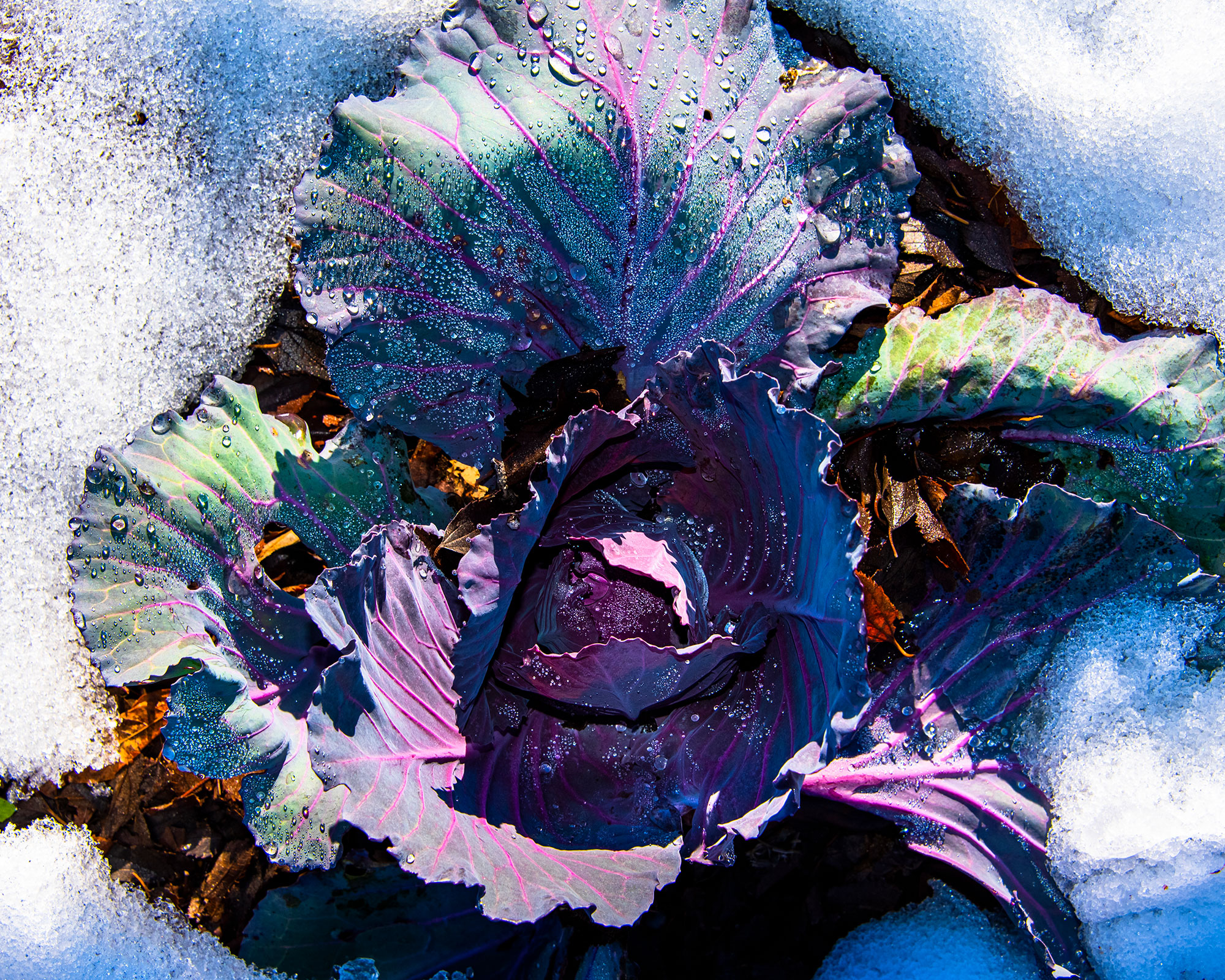
How to protect containers from snow damage
If your garden planters are frost resistant, lifted off the ground with feet to help drainage and are filled with the best winter plants for pots like winter flowering pansies, cyclamen and heathers you don't have to worry about them as they will be fine.
Wrap any large pots with tender plants like cannas in fleece, hessian sacking or bubble wrap if you are worried the plants are too exposed. This layer of insulation will help to prevent the roots freezing. Tie it securely in place and leave until the snow has gone.
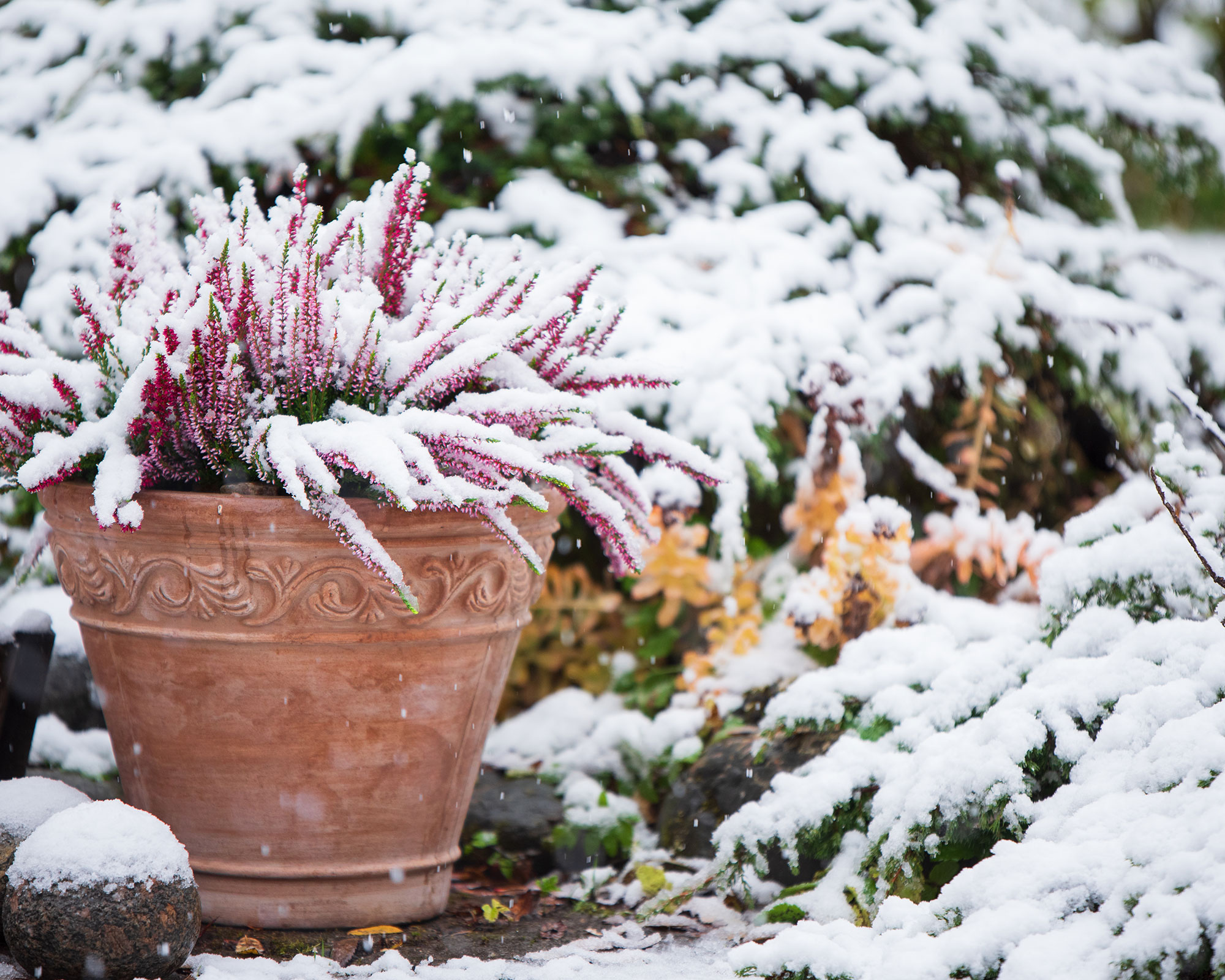
How do I protect plants from snow damage?
If you want to learn how to protect your plants from snow damage there are a few simple things to remember to give them the best chance of survival.
- Move plants in pots to the most sheltered part of the garden. This is usually against a wall of the house or in a shed.
- Insulate tender plants with a blanket of mulch, compost, wood chips or leaf mould to protect them from snow.
- If snow is forecast, wrap up or cover any plants that aren't hardy with a good layer of insulation such as horticultural fleece.
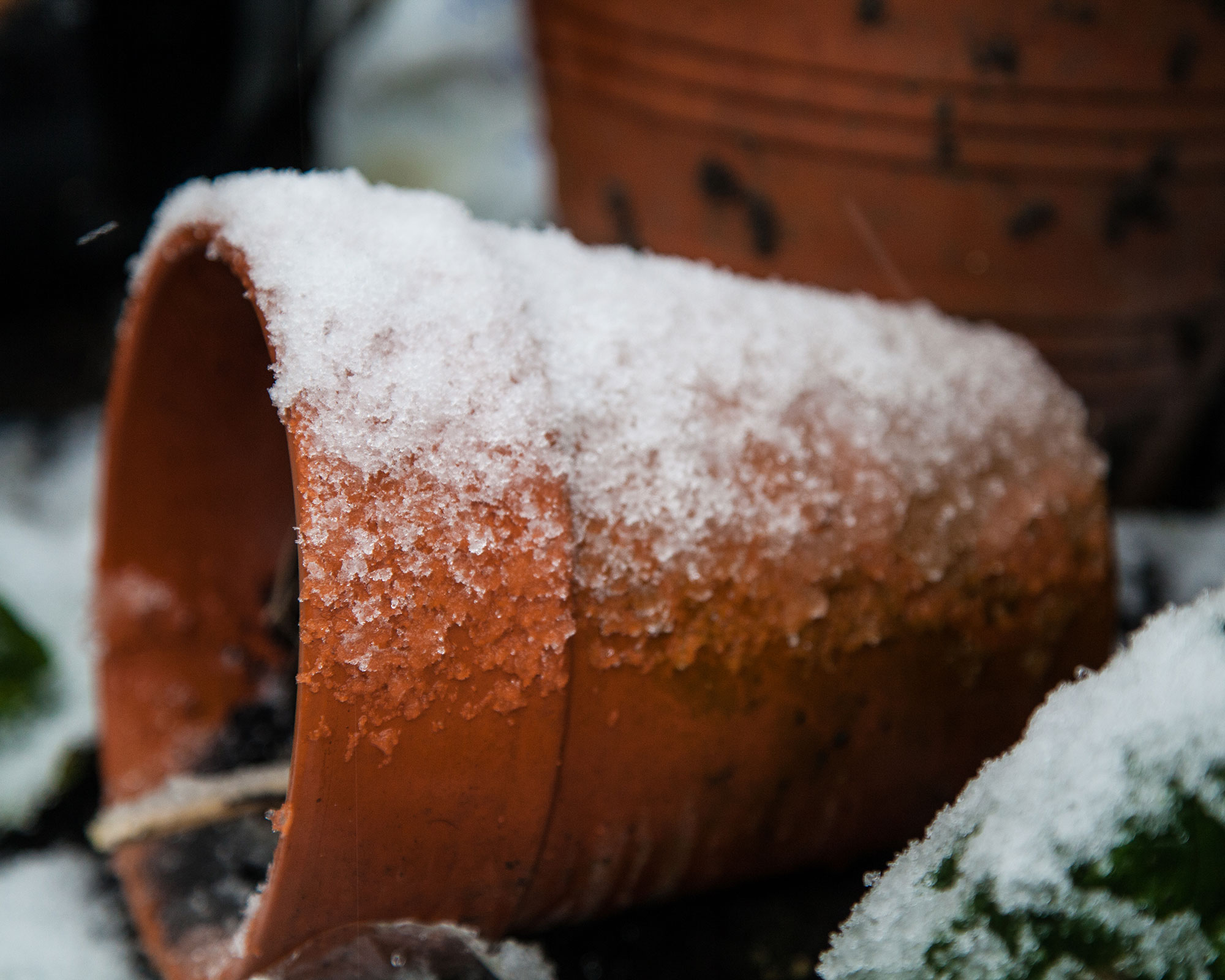
Should I cover my plants if it snows?
This very much depends on the plant. Many hardy plants are well adapted and do pretty well under a layer of snow. It can act as a blanket, protecting from harsh temperatures by holding in heat and at the same time helping to protect the roots of plants.
A light layer of snow has an insulating effect and helps to trap heat but if the snowfall is heavy it can be more of a problem, especially for tender plants that need special care by being covered with fleece or cloches.
As a general guide, play it safe when it comes to how to protect your plants from snow. It won't do any harm to insulate or cover them if you're not sure.
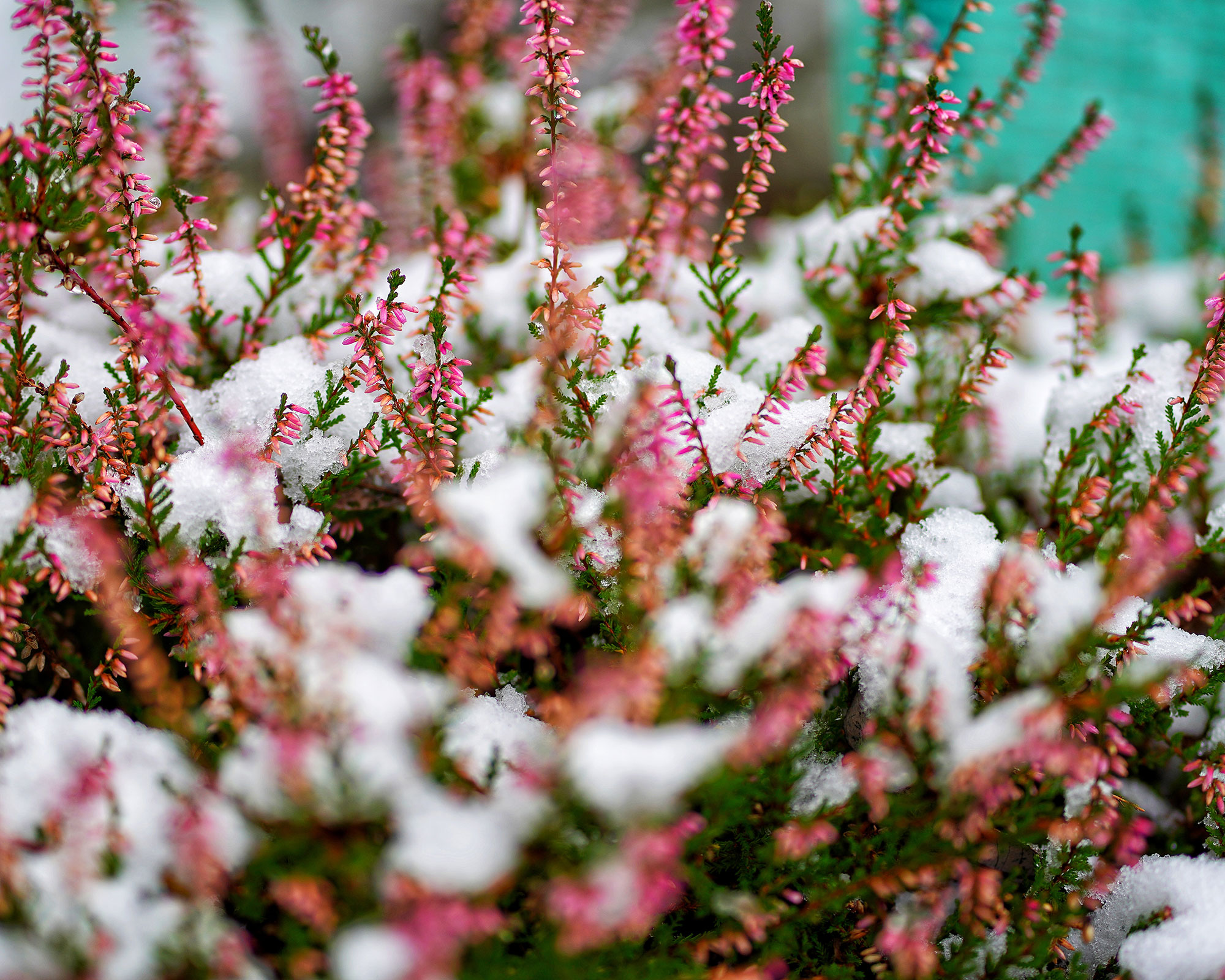
Will a sheet keep plants from freezing?
This depends on the severity of the weather. If you're only expecting a light fall of snow, you may be able to protect your winter garden plants by covering them with a sheet or a blanket.
This acts like insulation, keeping warm air from the ground around the plant. The warmth may be enough to keep the plant protected from a short cold snap.
But if the snowy weather is prolonged you will need to take more drastic action by using horticultural fleece topped by polythene sheeting to protect your plant from snow in a more planned way.
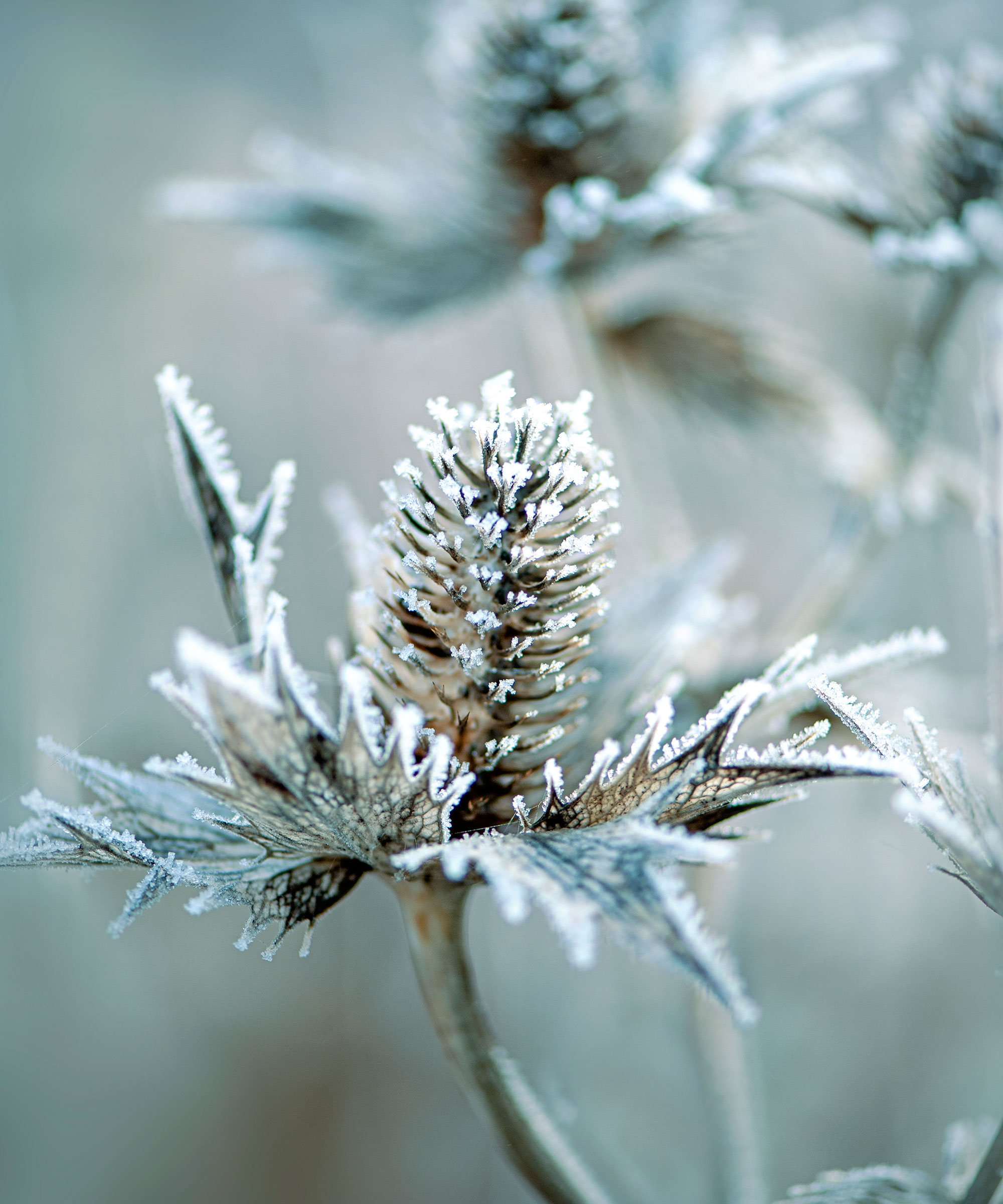

Lifestyle journalist Sarah Wilson has been writing about gardens since 2015. She's written for Gardeningetc.com, Livingetc, Homes & Gardens, Easy Gardens and Modern Gardens magazines. Having studied introductory garden and landscape design, she is currently putting the skills learned to good use in her own space where the dream is establishing a cutting garden.
